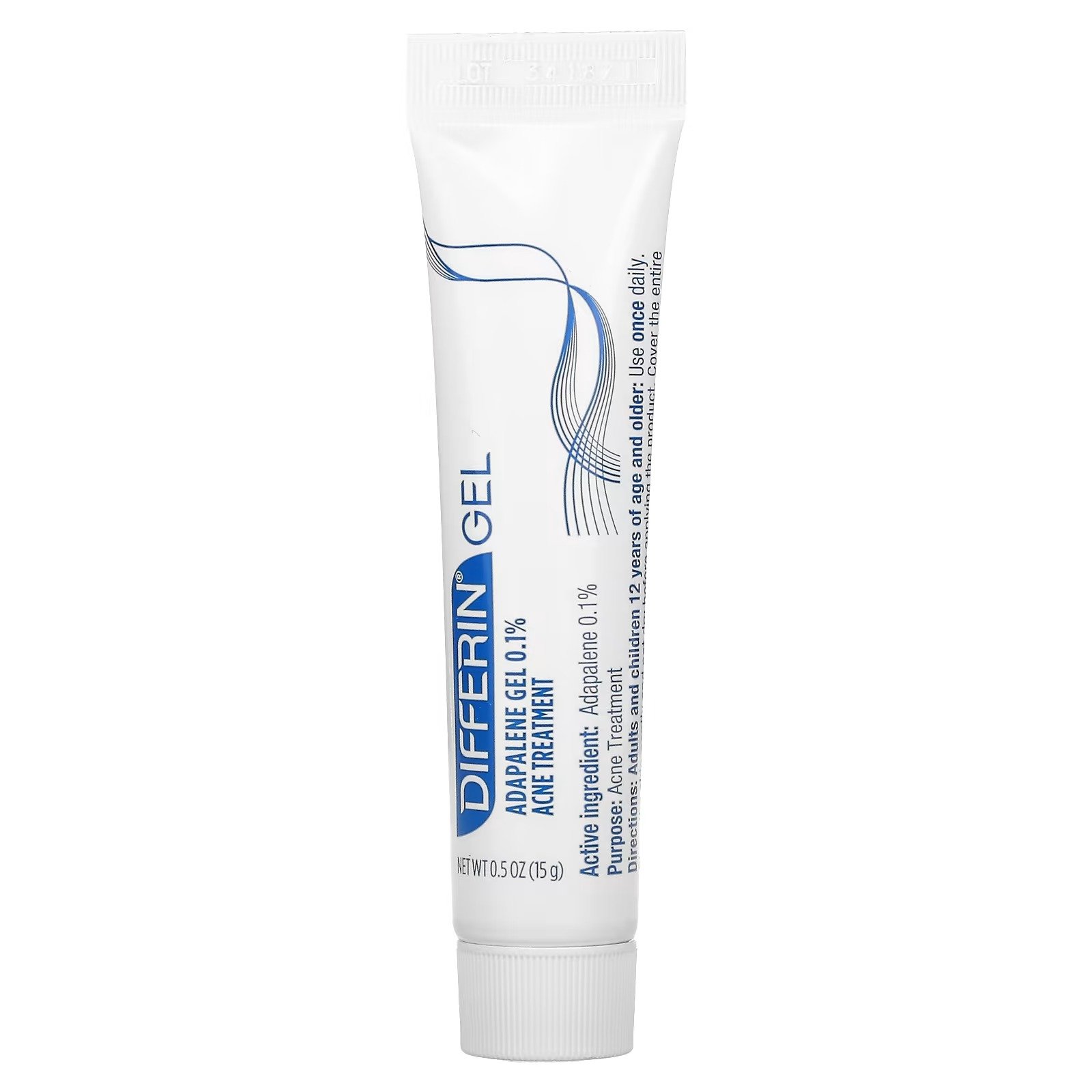Decoding Acne: Common Questions and Effective Treatments
IN THIS ARTICLE
Hey everyone, we're thrilled to be back with another article on But More Importantly. We focus on skincare and dermatology, and we realize that each time we upload an article, particularly on acne, it sparks a flurry of questions. So, in this article, we wanted to answer some of the most common queries we receive about acne.
It always surprises us that despite our articles being quite lengthy, we still can't cover everything. So, our mission today is to keep it concise and address your acne questions effectively.
Effectiveness of Active Ingredients in Acne Cleansers
A question we're often asked is about the effectiveness of the active ingredients in acne cleansers, and if they're beneficial or simply washed away. This is an important point, as the same ingredient is sometimes found in both your cleanser and leave-on products. The essential aspect to consider is whether the product stays on your skin long enough to be absorbed.
When using acne cleansers containing salicylic acid, niacinamide or benzoyl peroxide, we recommend leaving them on for at least five minutes, allowing the actives to penetrate the top skin layer, the stratum corneum, and start working their magic. These ingredients play a vital role as antibacterial agents, such as benzoyl peroxide, which combat acne-causing bacteria. Even a short contact with it proves to be quite effective.
Benzoyl peroxide is particularly beneficial as a wash since it can be rinsed off after providing its antibacterial benefits, which also preps your skin for other actives. Besides, rinsing it off ensures it won't stain anything else it might contact during the day. Last time we discussed this, there were questions about its staining properties. Although it may not dramatically stain your skin or hair, prolonged exposure can result in subtle changes in hair color.
If you're worried about the interaction of your skincare products, such as benzoyl peroxide interfering with your tretinoin, using them as wash-off products can similarly help. This way, they won't cling to your clothes or react with other skincare products, making cleansers with actives a great choice. Some ingredients I'd recommend for an acne cleanser include benzyl peroxide, salicylic acid, and sulfur.
Sulfur bar soaps are worth considering, especially for acne and rosacea, despite their rather distinctive odor (we're still working on delivering the promised Sulphur article!).
So, in conclusion, we believe these active ingredients in acne cleansers are indeed beneficial, just with a few caveats.
Navigating Ingredient Interactions: Benzoyl Peroxide, Retinol, and More
Common queries we get revolve around mixing skincare ingredients, such as combining benzoyl peroxide with retinol or salicylic acid with retinol. Historically, benzoyl peroxide has oxidized and deactivated retinoids, but the new formulations are much more stable and resistant to this. The challenge is determining if your specific retinol or tretinoin is compatible with benzoyl peroxide, as many over-the-counter products might cancel each other out.
A safer approach is using benzoyl peroxide as a wash-off, then applying retinol as a leave-on. This simplifies the process for those unsure about how to stagger these ingredients in their routine. Alternatively, you could use one ingredient at night and the other in the morning to avoid any potential interaction.
Let's consider the interaction of salicylic acid and retinol, two ingredients known for their potential to irritate the skin. If used concurrently in leave-on form, the likelihood of skin irritation increases. However, some skincare products do combine these ingredients, presumably after careful stability testing. The newer forms of tretinoin and retinol, which are more stable than their predecessors, are likely safe to use in combination with salicylic acid, although I generally advise against using them simultaneously.
Niacinamide, a newer player in acne treatment, works well with retinoids. They have complementary effects, so their combined use could enhance the benefits for acne treatment without increasing skin irritation.
Gradual Introduction of New Products: Building a Balanced Skincare Routine
When starting a new skincare routine, it's important to introduce new products gradually. Do not start with a retinoid, benzoyl peroxide, and salicylic acid all at once. If your skin reacts poorly, you'll need to determine the culprit, which is difficult if all were introduced simultaneously. Instead, start with adapalene for a month, then introduce a benzoyl peroxide product, and finally, after a few weeks, add a salicylic acid cleanser.
Moving away from over-the-counter products, topical retinoids can be used with most topical antibiotics, a common combination for treating acne. However, if using topical benzoyl peroxide with topical dapsone, apply them at different times to avoid a yellowish-orange discoloration of the skin.
Gain Expert Insights
Acne Purging: Patience and Persistence
Purging, a common concern among acne patients, refers to a worsening of acne upon starting a new regimen. This is thought to occur due to an increase in skin cell turnover or exfoliation, causing underlying acne to surface more quickly. This phenomenon is often observed with the use of retinoids. It's also important to note that it takes time for acne treatments, like accutane or oral antibiotics, to fully kick in. Therefore, patience is key in determining whether your acne is improving, getting worse, or simply purging. You need to wait a minimum of two to three months to assess the efficacy of your acne medications.
If you don't give your treatments sufficient time, you might not navigate past the purging phase. It's crucial to understand that if you're experiencing purging, you shouldn't abandon your treatments. In fact, they could be effective despite this temporary flare. If you start noticing severe purging, particularly if you're using a systemic retinoid and observing new cystic lesions and inflammation, notify your dermatologist. They want to be informed so they can help to alleviate the inflammation while the other medications take effect.
Managing Severe Purging: Considerations with Accutane Treatment
Indeed, the purging when starting treatments like Accutane or Isotretinoin can be severe. In such cases, dermatologists might have to prescribe systemic steroids first to prevent the purging from worsening. If you're experiencing severe purging, it's essential to inform your dermatologist. However, it's necessary to endure the initial few months to witness the effectiveness of the treatment.
Identifying Purging vs. Allergic Reactions: Key Differentiators
Next is the question of differentiating between acne purging or an allergic reaction or irritation from a product. Acne will typically occur in your usual acne-prone areas, such as your jawline or forehead. Conversely, irritation will manifest in areas where you don't usually have acne. If you're accumulating redness in those areas, it could be a sign of irritation. When you're dealing with irritation, it's advisable to ease off on the treatment, whereas, with purging, you should persist with your treatment regimen. It's therefore crucial to correctly identify which situation is taking place.
Understanding the Commitment to Acne Treatment
Following on from this, a common query is about the duration required to witness improvement with an acne regimen and when to consider trying something different. Your initial experience with a product, while it can be rated on factors such as immediate sensation and experience, doesn't provide an accurate judgment of the product's effectiveness.
About the Author: Caolan
With over a decade of international experience, Caolan's passion lies in simplifying the complex. Now, as the founder of But More Importantly, he applies these talents to the world of cosmetics, aiming to unmask marketing hype and provide readers with the truth about beauty products. His mission: to help you make informed choices and discover what truly enhances your beauty routine.
To accurately rate its effectiveness, I suggest a thorough evaluation over a minimum of two months, extending to three months at most. If there's no visible improvement within this period, it's time to consider different treatment options. Managing acne can be frustrating. Often, people abandon treatment prematurely because they're disheartened by not seeing immediate results. However, it's critical to understand that any effective treatment requires at least two to three months to deliver significant results. Therefore, commitment from the start is crucial.
Studies in the dermatological field indicate that less than half of individuals stick with their treatment long enough to reap its benefits. Therefore, the challenge is not only about prescribing the right treatment but also building trust. This trust motivates you to persist through the initial dryness and potential purging period that comes with using tretinoin, taking you to the three-month mark, where you begin to see an improvement in your skin.
Treating acne successfully can be incredibly rewarding. Seeing a teenager's mood and confidence transform due to clearer skin is one of the aspects of dermatology I find most interesting. The key lies in adhering to the prescribed treatment consistently.
Unveiling the Connection Between Acne and Hormones
Lastly, let's briefly touch upon hormonal acne, a complex topic that merits a more comprehensive discussion. Hormonal acne typically manifests as painful, cystic blemishes along the jawline and chin, often coinciding with women's menstrual cycles. However, it's crucial to understand that most individuals with acne have normal hormonal levels; their skin cells are merely more responsive to these hormones.
While it's accurate to say that most acne is hormonally linked, it's also essential to diagnose any elevated hormone levels accurately. Conditions such as Polycystic Ovarian Syndrome (PCOS), ovarian cysts, or rare ovarian tumors can lead to higher hormone levels, necessitating appropriate treatment. If you're experiencing symptoms beyond hormonal acne, like excessive hair growth, darkened skin around the neck (acanthosis nigricans), unexplained weight gain, or irregular menstrual cycles, it's important to consult a physician.
When examining your skin and discussing your concerns, dermatologists take into account various factors to determine the most effective treatment for you. This is particularly vital for individuals dealing with hormonal acne or conditions like PCOS. Establishing a solid, trust-based relationship with your dermatologist is crucial in formulating a treatment plan that aligns with your preferences. Some patients prefer not to use hormone-regulating treatments or birth control, necessitating a more tailored approach.
Exploring Different Treatment Options for Hormonal Acne
Treating hormonal acne goes beyond over-the-counter remedies like benzoyl peroxide and salicylic acid, which predominantly target acne causes but don't regulate hormones. Dermatology, however, offers several treatments that do. Birth control, for instance, is a common first step for balancing hormones. Other options include medications like metformin or spironolactone, an old blood pressure drug that can lightly reduce androgens or "masculinizing" hormones contributing to acne. Dermatologists often use spironolactone to treat hormonal acne successfully, and some patients find it helpful for hormonal hair loss as well. However, it's essential to note that it's not suitable for everyone, particularly men and pregnant women.
Related Stories
Topical treatments are also available, such as prescription-only topical spironolactone, offered by companies like Apostrophe. Another promising treatment on the horizon is Winlevi, a medication that blocks the androgen receptor. It is highly anticipated for its potential in treating hormonal acne and heralded as a game-changer due to its unique mechanism of action. However, it's vital to hold final judgments until it proves effective in practical applications. Despite the excitement surrounding its potential, only real-world use can determine its effectiveness. New treatments can sound promising on paper but may not deliver as expected in practice. Often, research articles present a product in a promising light, but in practice, its efficacy may not match up to its purported benefits. This discrepancy often becomes apparent only after the product has been tried on several patients. The user-friendliness of a product is another essential factor that often only comes to light when patients begin to use it.
We appreciate everyone who reads our content. You may find answers to common questions about acne here, but if you have more queries, feel free to leave them below. We can always create a follow-up article on acne, sharing our experiences and addressing frequently asked questions. It's impossible to cover everything in one article, so your feedback is highly appreciated. Thanks for reading, and we look forward to seeing you next time.















